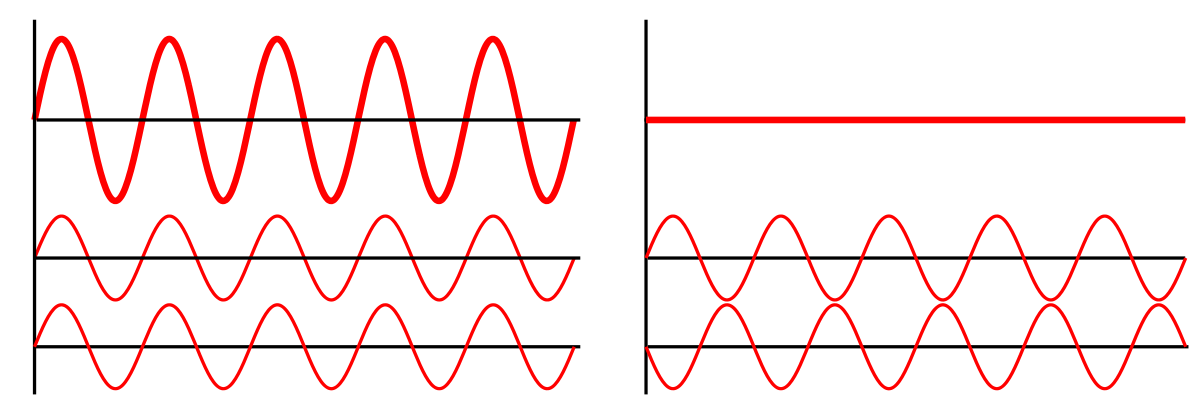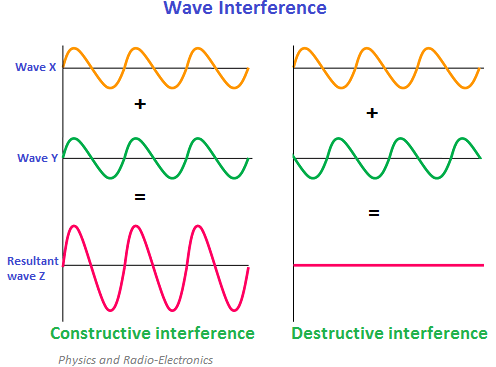Wave Interference Study Guide
INTRODUCTION
Interference is a process in which two waves merge by adding their displacements at every point in space and time, resulting in a consequent wave of larger, lower, or equal amplitude.
DEFINITION
When waves collide at the same time as touring throughout the identical medium, that is called wave interference. The medium takes on a form due to the internet impact of the 2 awesome waves at the medium’s debris because of wave interference.
WAVE INTERFERENCE TYPES
There are two types of Wave interference –
CONSTRUCTIVE INTERFERENCE
- Constructive interference is a form of interference that occurs when two interference waves have the same displacement in the same direction at any point along with the medium.
- In this scenario, both waves have upshifts, so the medium has a larger upshift than the shifts of the two interfering pulses.
- Constructive interference is detected at any point where the two interference waves shift upwards.
- However, if both opposite waves are shifted down, you will be notified.
DESTRUCTIVE INTERFERENCE
Destructive interference occurs when two interference waves are displaced in opposite directions at any point along with the medium.
PRINCIPLE OF SUPERPOSITION
If two or more waves of the same type collide at the same point, the resulting amplitude at that point is equal to the vector sum of the amplitudes of the individual waves, according to the wave superposition principle.
APPLICATIONS OF INTERFERENCE OF WAVES IN REAL LIFE
- Soap bubbles are another real-life example of light interference.
- Wet roads with color patches during the rainy season, color patches on the roads are plainly seen.
- Anti-reflective coating
- Oil on the water’s surface
- Hologram.
SUMMARY
- The medium takes shape as a result of the net influence of the two separate waves when waves collide.
- The resulting amplitude is the sum of the individual amplitudes when one wave crest meets another wave crest with the same frequency at the same point. This is called constructive interference.
- When one wave crest collides with another wave valley, the combined amplitude is the difference between the individual amplitudes-this is known as destructive interference.
FAQs
Q. State the interference definition.
Interference is a process in which two waves merge by adding their displacements at every point in space and time, resulting in a consequent wave of larger, lower, or equal amplitude.
Q. What are the types of interference?
There are two types of interference:
- Constructive interference
- Destructive interference
Q. State true or false: The interference of waves results in the medium taking shape resulting from the net effect of the two individual waves.
True, the medium takes shape as a result of the net influence of the two separate waves when waves collide.
Q. State the principle of superposition of waves?
According to the superposition principle, when two or more waves merge in space, the resulting disruption is equivalent to the algebraic total of the individual disturbances.
We hope you enjoyed studying this lesson and learned something cool about Wave Interference! Join our Discord community to get any questions you may have answered and to engage with other students just like you! We promise, it makes studying much more fun!😎
REFERENCE
- Interference of Waves: https://byjus.com/physics/interference-of-waves/** **Accessed 19th April 2022.
- Interference of Waves: https://www.physicsclassroom.com/class/waves/Lesson-3/Interference-of-Waves#:~:text=Wave%20interference%20is%20the%20phenomenon,the%20particles%20of%20the%20medium. Accessed 19th April 2022.
- Wave Interference: https://en.wikipedia.org/wiki/Wave_interference Accessed 19th April 2022.


